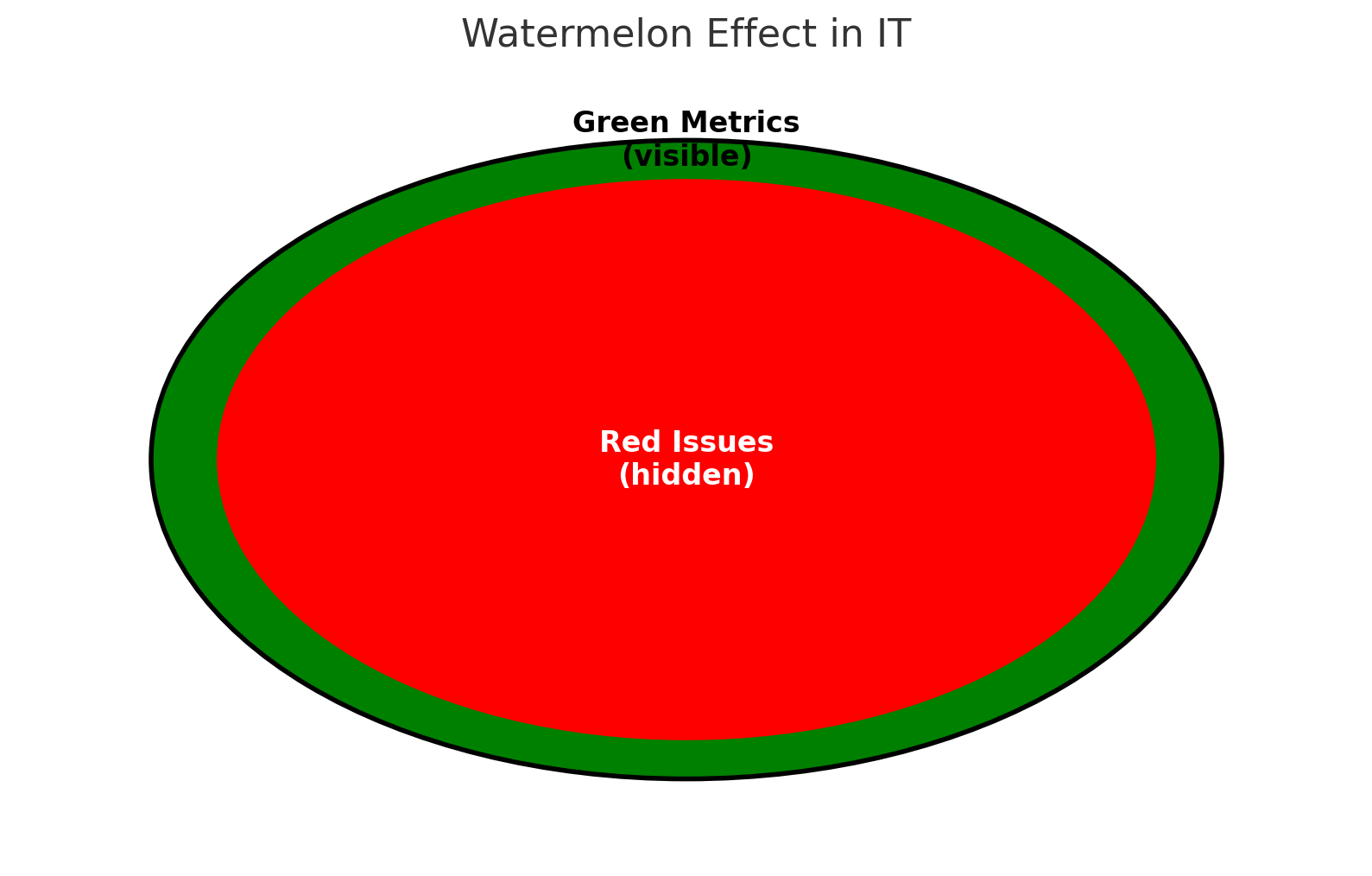The Watermelon Effect: Are Your Metrics Hiding the Truth?
The watermelon effect in IT refers to situations where metrics appear green (positive) on the outside but are red (negative) on the inside. This can lead to a false sense of security and overlook underlying issues. Addressing this requires a combination of transparent metrics, honest culture, and actionable insights.

Understanding the Watermelon Effect

Strategies to Avoid the Watermelon Effect
-
Focus on Meaningful Metrics
- Prioritize metrics that truly reflect the performance and health of IT services.
- Avoid vanity metrics that can be misleading and instead focus on those that offer actionable insights.
-
Promote Transparency and Honesty
- Encourage a culture where employees feel safe to report true performance without fear of repercussions.
- Leadership should demonstrate that metrics are used to identify areas for improvement, not to punish.
-
Regularly Revisit Metrics
- Continuously review and adjust metrics to ensure they align with organisational goals.
- Ensure metrics are relevant and provide value rather than just being easy to measure.
-
Lean into the Red
- Embrace negative indicators as opportunities for improvement.
- Address issues early when there is still time to make meaningful changes.
-
Integrate OKRs (Objectives and Key Results)
- Implement OKRs to align metrics with strategic objectives.
- Use OKRs to create a clear framework for measuring progress and identifying areas for improvement.
-
Use Technology for Better Measurement
- Leverage advanced analytics and IT management tools to gain deeper insights.
- Ensure data quality and accuracy to make informed decisions.
Implementing Solutions
-
Leadership Commitment
- Leaders must set the tone for transparency and the importance of meaningful metrics.
- Regular communication about the value of honest reporting and continuous improvement is crucial.
-
Training and Education
- Educate employees about the importance of accurate metrics and how to interpret them.
- Provide training on using tools and technologies that help in accurate measurement and reporting.
-
Feedback Loops
- Establish feedback mechanisms to continuously gather insights from various levels of the organisation.
- Use this feedback to refine metrics and strategies continually.
-
Cultural Change
- Foster a culture that values truth and continuous improvement over appearances.
- Encourage open discussions about challenges and potential solutions.
Conclusion
Tackling the watermelon effect requires a multi-faceted approach involving cultural change, strategic focus on meaningful metrics, and the effective use of technology,. By promoting transparency, embracing honest reporting, and continuously refining measurement practices, organisations can ensure they are addressing real issues and driving genuine improvement in their IT services.